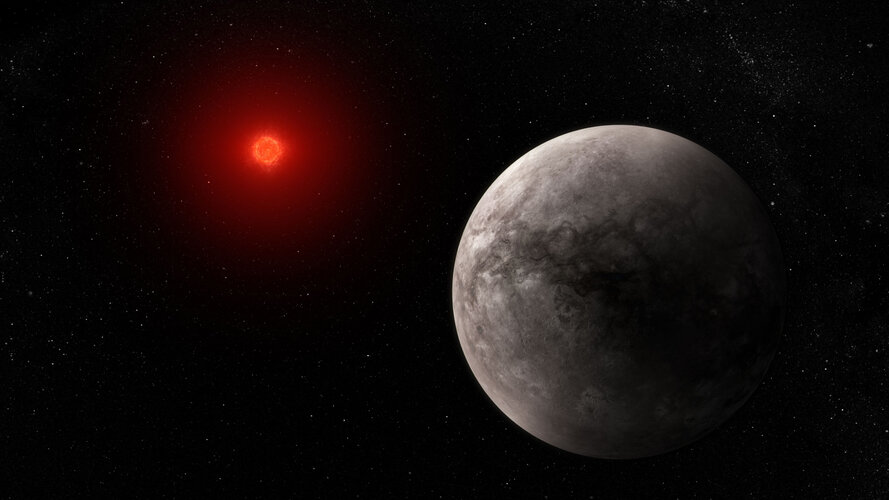Measuring minuscule changes in brightness

Webb’s detection of a secondary eclipse is itself a major milestone. With the star more than 1,000 times brighter than the planet, the change in brightness is less than 0.1%.
“There was also some fear that we’d miss the eclipse. The planets all tug on each other, so the orbits are not perfect,” said Taylor Bell, the post-doctoral researcher at the Bay Area Environmental Research Institute who analysed the data. “But it was just amazing: The time of the eclipse that we saw in the data matched the predicted time within a couple of minutes.”
Analysis of data from five separate secondary eclipse observations indicates that TRAPPIST-1 b has a dayside temperature of about 500 kelvins, or roughly 230°C. The team thinks the most likely interpretation is that the planet does not have an atmosphere.
“We compared the results to computer models showing what the temperature should be in different scenarios,” explained Ducrot. “The results are almost perfectly consistent with a blackbody made of bare rock and no atmosphere to circulate the heat. We also didn’t see any signs of light being absorbed by carbon dioxide, which would be apparent in these measurements.”
This research was conducted as part of Guaranteed Time Observation (GTO) program 1177, which is one of eight approved GTO and General Observer (GO) programs designed to help fully characterise the TRAPPIST-1 system. Additional secondary eclipse observations of TRAPPIST-1 b are currently in progress, and now that they know how good the data can be, the team hopes to eventually capture a full phase curve showing the change in brightness over the entire orbit. This will allow them to see how the temperature changes from the day to the nightside and confirm if the planet has an atmosphere or not.
“There was one target that I dreamed of having,” said Lagage, who worked on the development of the MIRI instrument for more than two decades. “And it was this one. This is the first time we can detect the emission from a rocky, temperate planet. It’s a really important step in the story of discovering exoplanets.”



